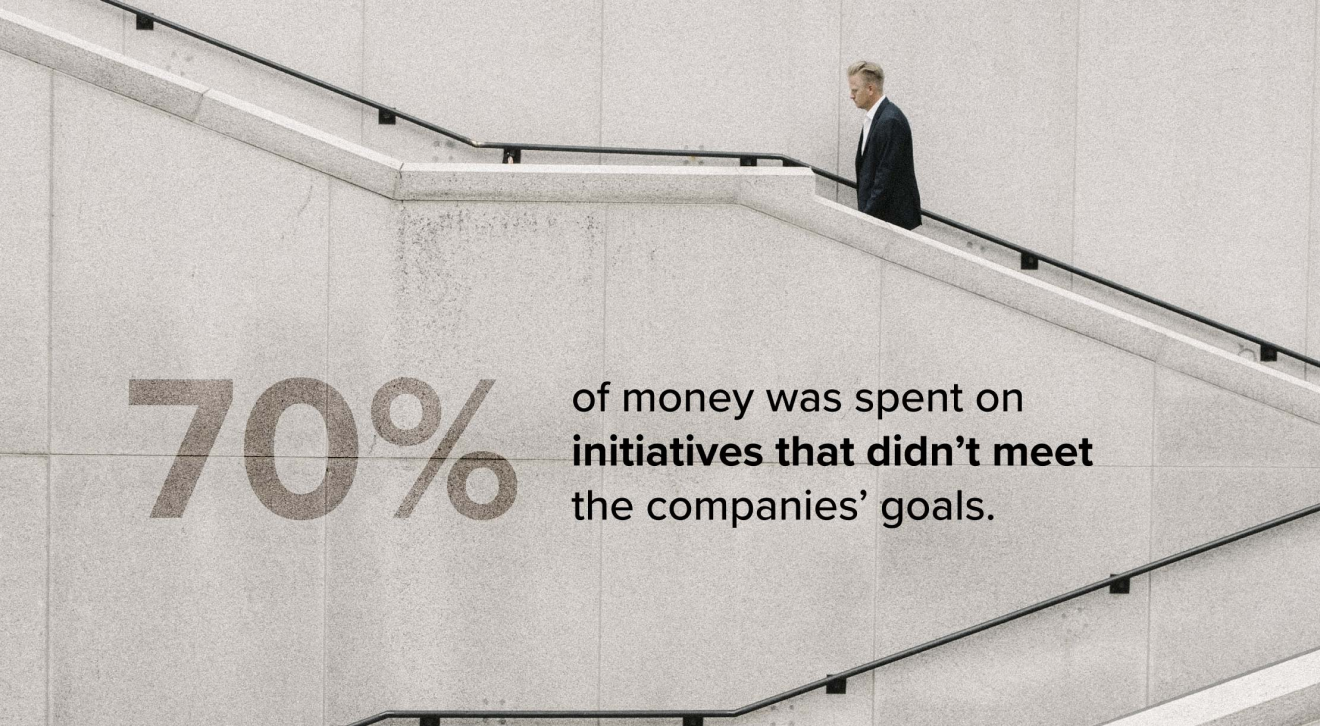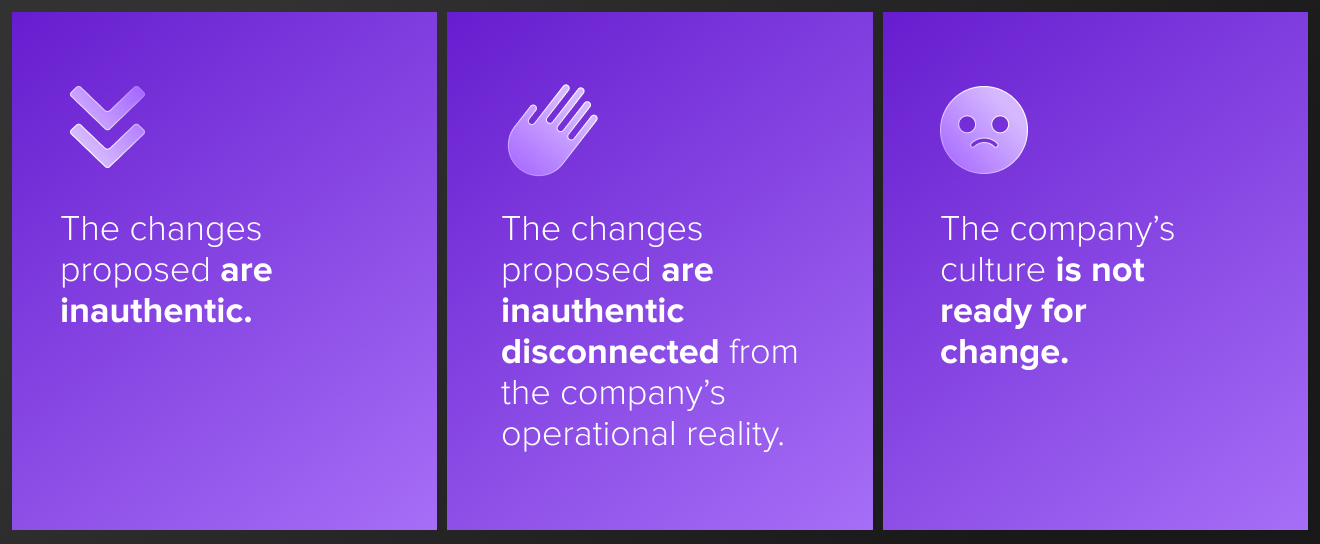According to Harvard Business Review, companies spent $1.3 trillion on digital transformation in 2018. Almost 70% of that money was spent on initiatives that didn’t meet the companies’ goals. The Standish Group reviewed around 2,000 software projects and found that 45-50% of the features developed were “almost never” or “never” used.
These facts raise a variety of questions: What went wrong? Why did these projects fail? And what does it take to make a digital transformation project succeed?

What makes projects fail
In my experience, it’s not a question of lack of money or resources. Projects typically fail because of three primary factors:

The inauthenticity trap
For a transformation to work and gain traction within a company, it has to be rooted in the company’s DNA. If the company makes changes that aren’t true to who they are, those changes have a tendency to fail. We’ve all witnessed companies trying to re-invent themselves in order to “stay relevant”, only to end up alienating their core customer base, while simultaneously failing to attract new customers who prefer the genuine article. This is especially true when it comes to the tech space. Many companies tried to hop on the digital bandwagon without staying true to their core corporate identity. This led to them developing products that didn’t support their brand values and culture.

Detached from “operational reality”
Understanding the operational reality is about realizing that a large company or organization is a complex machine made up of many moving parts. When you introduce something new, it has to fit into the existing inner workings, otherwise, you risk breaking the machine. This is a common mistake made by many consultancies. They come into a company and want to create a revolution, failing to realize that revolutions don’t work well in large companies. Because if you dramatically alter one part of the company, it can have significant implications across the entire business.
The change-resistant culture
The third factor involves the company’s culture. A project team or external consultancy can come up with the right solution, at the right time, but if the company isn’t culturally ready or able to do something new, the project will fail. This factor is particularly common in large companies. Their shareholders require short-term returns, management has quarterly objectives that they want met, and employees can be so focused on meeting current targets, that they simply don’t have the bandwidth to try something new.
It doesn’t have to be that way. The first step is always recognizing that you have a challenge. At Star, we have a track record of successfully completing digital transformation projects for hundreds of companies, from tech start-ups to large, multinational corporations. It can be done. Here is our recipe for project success.
Success factor #1: Co-creation with our clients’ customers
We firmly believe that successful solutions involve co-creation between us, our client and our client’s customers. By engaging our client’s customers, we ensure that the solution we develop will meet the customers’ current and future needs. And by working closely with our client, we ensure that the solution is authentic and true to the company’s culture, brand and values.
Co-creation also helps address the issue of a change-resistant culture. The co-creation process needs to involve the right people – not just the fans of change, but change opponents as well. People who are skeptical; people who are so busy doing what needs to be done that they don’t have time to talk about what could be done. These are actually the most important people to bring into the co-creation process, so that we can take them on a cultural journey, which ends with them being much more open to change.

Success factor #2: Understanding the operational reality
The second success factor is also a byproduct of the first – understanding our customers’ operational reality. Our co-creation process starts with defining the customer’s endgame. This helps us understand all of the complex inner workings within our customer’s organization and ensures that the solution we deliver plugs nicely into their operational reality, so it can actually and practically be implemented. It also helps us to design an impactful solution, where the impact is measurable and visible to the company, its management and its shareholders.
Success factor #3: The right travel companions
Each project is a journey. We start in the future, defining our customer’s endgame, and then we work our way backwards to the present. In order for us to arrive at the right destination, we have to have the right travel companions. The customers and people we work with have to be willing to take risks and embrace ambiguity during the process. Otherwise, we won’t get where we need to go. Thankfully, we’ve had plenty of willing travel companions over the past 12 years.




